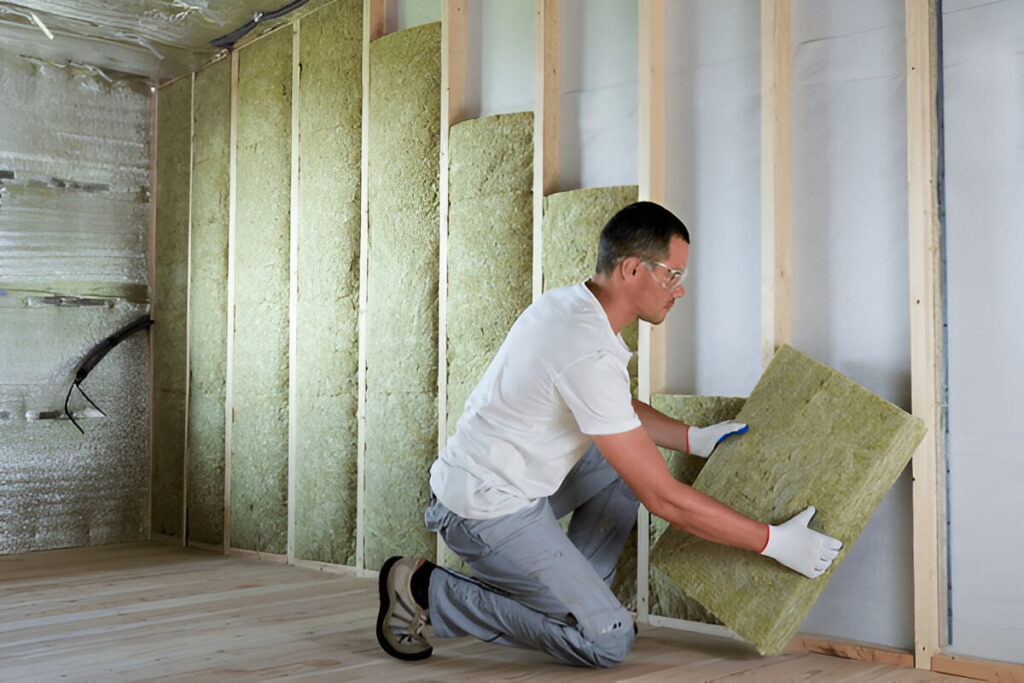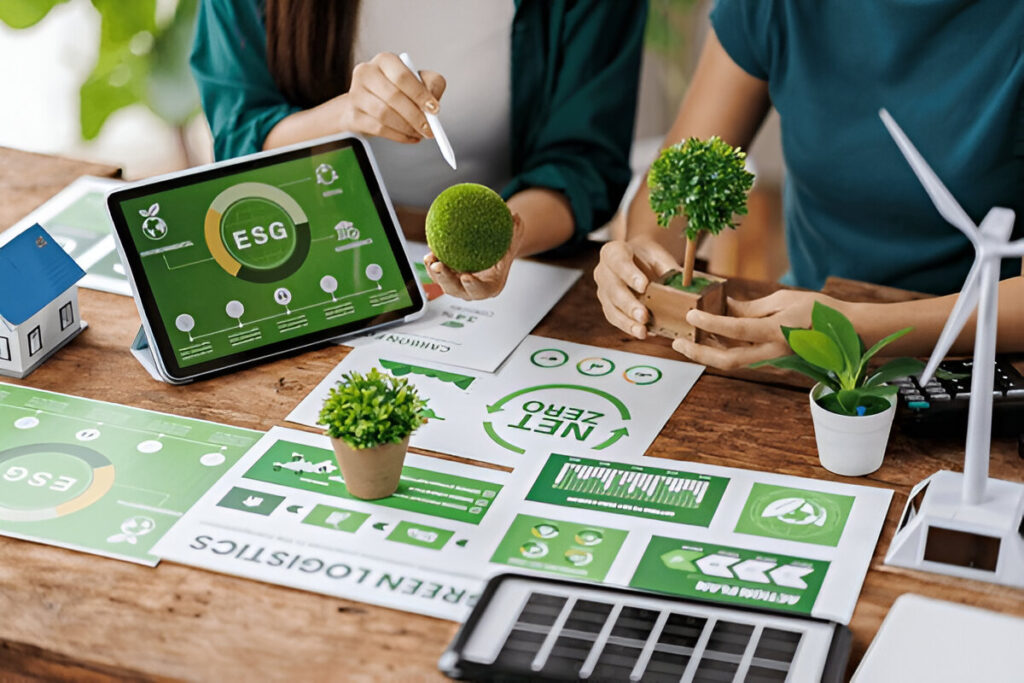The construction industry in the United Kingdom is undergoing a significant transformation, driven by the urgent need to address climate change and reduce environmental impact. Central to this shift is the adoption of green building materials—innovative, sustainable alternatives to traditional construction materials that promote energy efficiency, reduce carbon footprints, and enhance occupant health. As the UK aims to meet its ambitious net-zero carbon targets by 2050, green building materials have become indispensable in shaping a sustainable built environment.
What Are Green Building Materials?
Green building materials are those that are environmentally responsible throughout their lifecycle—from extraction and manufacturing to transportation, installation, use, and eventual disposal or recycling. These materials are selected based on their ability to:
- Reduce energy consumption during production and use
- Minimize greenhouse gas emissions
- Utilize renewable or recycled resources
- Enhance indoor air quality
- Promote occupant health and comfort
In the UK, the adoption of green building materials is not merely a trend but a necessity, supported by stringent building regulations, government incentives, and a growing demand for sustainable living spaces.
Key Benefits of Green Building Materials in the UK

1. Environmental Impact Reduction
The construction sector is a significant contributor to the UK’s carbon emissions. By integrating green building materials, such as recycled steel, low-carbon concrete, and sustainably sourced timber, the environmental impact of construction projects can be substantially reduced. These materials often require less energy to produce and have a lower carbon footprint compared to their traditional counterparts.
2. Energy Efficiency
Green building materials contribute to the energy efficiency of buildings by improving insulation, reducing heat loss, and enhancing natural lighting. For instance, materials like hempcrete and sheep’s wool insulation offer excellent thermal performance, reducing the need for artificial heating and cooling systems, leading to lower energy bills for occupants.
3. Health and Well-being
Many conventional building materials emit volatile organic compounds (VOCs) and other toxins that can degrade indoor air quality and affect occupant health. Green materials, such as low-VOC paints, natural linoleum flooring, and non-toxic adhesives, contribute to healthier indoor environments, reducing the risk of respiratory issues and promoting overall well-being.
4. Economic Advantages
While the initial cost of green building materials may be higher, the long-term savings are significant. Reduced energy consumption, lower maintenance costs, and increased property value due to sustainability credentials make green buildings a wise investment. Additionally, the UK government offers various incentives and grants to encourage the use of sustainable materials in construction projects.
Common Green Building Materials Used in the UK

1. Recycled Steel
Recycled steel is a sustainable alternative to virgin steel, reducing the need for mining and conserving natural resources. It is commonly used in structural frameworks, roofing, and reinforcement bars, offering strength and durability while minimizing environmental impact.
2. Hempcrete
Hempcrete is a bio-composite material made from hemp hurds and lime. It is lightweight, breathable, and provides excellent thermal insulation. Hempcrete is increasingly used in wall construction and insulation, contributing to energy-efficient buildings.
3. Sheep’s Wool Insulation
Sheep’s wool is a natural, renewable, and non-toxic material that offers excellent thermal and acoustic insulation properties. It performs better than synthetic alternatives in damp conditions and is biodegradable at the end of its life cycle.
4. Reclaimed Wood
Reclaimed wood is salvaged from old buildings, barns, or discarded furniture. Using reclaimed wood reduces the demand for new timber, preserves forests, and adds unique character to interior and exterior spaces. It is commonly used for flooring, wall paneling, and furniture.
5. Low-Carbon Concrete
Traditional concrete production generates high carbon dioxide emissions, primarily due to cement production. Low-carbon concrete incorporates industrial byproducts like fly ash, slag, or silica fume to reduce cement content, lower emissions, and improve durability.
6. Cork
Cork is harvested from the bark of cork oak trees, which regenerate naturally. It is an excellent material for flooring, insulation, and wall coverings due to its thermal and acoustic properties. Cork is biodegradable, renewable, and highly durable.
7. Recycled Plastic
Recycled plastic can be transformed into building materials like insulation, roofing tiles, and composite lumber. Using recycled plastics helps reduce plastic waste and diverts it from landfills, contributing to a circular economy.
8. Solar Tiles
Solar tiles or photovoltaic shingles serve as both a roofing material and an energy generator. By converting sunlight into electricity, they reduce dependence on fossil fuels and contribute to sustainable energy solutions.
Case Studies of Green Building Materials in the UK

1. Wolves Lane Centre, North London
The Wolves Lane Centre in North London is a prime example of sustainable construction. The centre’s new buildings were constructed using bioregional and low-carbon materials such as C16 timber, lime-rendered straw bales, and recycled rubble. These materials emphasize environmental sustainability and carbon sequestration, reflecting a unified architectural language designed for easy maintenance and adaptability.
2. Featherstone Young’s Garage Conversion, Bethnal Green
In Bethnal Green, a 58m² garage conversion by Featherstone Young showcases the creative use of recycled and low-impact materials. The project prominently features recycled oriented strand board (OSB), terrazzo tile offcuts, and natural linoleum flooring. This approach not only reduces waste but also highlights the aesthetic and functional potential of sustainable materials.
Challenges in Adopting Green Building Materials
Despite their benefits, the adoption of green building materials in the UK faces several challenges:
- Higher Initial Costs: Some green materials may have a higher upfront cost compared to traditional materials, which can deter developers and homeowners.
- Limited Availability: Not all green materials are widely available in every region, leading to supply chain challenges.
- Lack of Awareness: Builders, architects, and consumers may lack knowledge about the benefits and applications of green materials.
- Regulatory Hurdles: Navigating building codes and regulations can be complex when integrating new materials into construction projects.
Future Trends in Green Building Materials in the UK
The future of green building materials in the UK is promising, with several emerging trends:
- Smart Materials: Innovations such as self-healing concrete and phase-change materials that adapt to environmental conditions are gaining traction.
- Circular Economy Practices: Emphasis on designing buildings for disassembly and using materials that can be easily recycled or repurposed.
- Digital Fabrication: Technologies like 3D printing are enabling the creation of complex, customized building components with minimal waste.
- Biodegradable Materials: Increased use of materials like mycelium and algae-based products that offer sustainable alternatives to traditional construction materials.
Conclusion
Green building materials are at the forefront of the UK’s efforts to create a sustainable built environment. By reducing environmental impact, enhancing energy efficiency, and promoting occupant health, these materials play a crucial role in achieving the nation’s sustainability goals. As the construction industry continues to innovate and adopt green practices, the future of building in the UK looks both sustainable and promising.
For more information on sustainable building materials and practices in the UK, visit GreenSpec and Eco-Renovation UK.
Frequently Asked Questions (FAQ)
Q1: What are green building materials?
A: Green building materials are environmentally friendly materials used in construction. They are sustainable, energy-efficient, and have a low environmental impact throughout their lifecycle—from production to disposal. Examples include recycled steel, hempcrete, low-carbon concrete, and reclaimed wood.
Q2: Why are green building materials important in the UK?
A: Green building materials help the UK construction industry reduce carbon emissions, improve energy efficiency, and create healthier living spaces. They support the country’s net-zero carbon targets and align with government sustainability policies.
Q3: What are the most common green building materials in the UK?
A: Common green building materials in the UK include recycled steel, hempcrete, sheep’s wool insulation, reclaimed wood, low-carbon concrete, cork, recycled plastic, and solar tiles.
Q4: How do green building materials reduce environmental impact?
A: These materials reduce resource extraction, lower greenhouse gas emissions, and minimize waste. For instance, recycled steel reduces mining needs, low-carbon concrete uses industrial byproducts, and hempcrete stores carbon while providing insulation.
Q5: Are green building materials more expensive than conventional materials?
A: While some green materials have a higher upfront cost, they offer long-term savings through reduced energy bills, lower maintenance, and potential government incentives for sustainable construction projects in the UK.
Q6: Can green building materials improve indoor air quality?
A: Yes. Many green materials, such as low-VOC paints, natural flooring, and non-toxic insulation, reduce indoor pollutants, creating a healthier environment for occupants.
Q7: What are some UK examples of green building projects?
A: Examples include the Wolves Lane Centre in North London, which uses low-carbon and bioregional materials, and Featherstone Young’s garage conversion in Bethnal Green, which utilizes recycled OSB, terrazzo tile offcuts, and natural linoleum flooring.
Q8: What future trends are emerging in green building materials in the UK?
A: Future trends include smart materials like self-healing concrete, biodegradable materials such as mycelium and algae-based products, circular economy practices for material reuse, and digital fabrication using 3D printing to reduce waste.
Q9: Where can I buy green building materials in the UK?
A: UK suppliers include GreenSpec, The Concrete Centre, Natural Insulation Association, and various local sustainable building material providers.
Q10: How can green building materials contribute to energy efficiency?
A: Materials like hempcrete, sheep’s wool insulation, cork, and solar tiles improve thermal performance, reduce heat loss, and can generate renewable energy, lowering the overall energy consumption of buildings.






